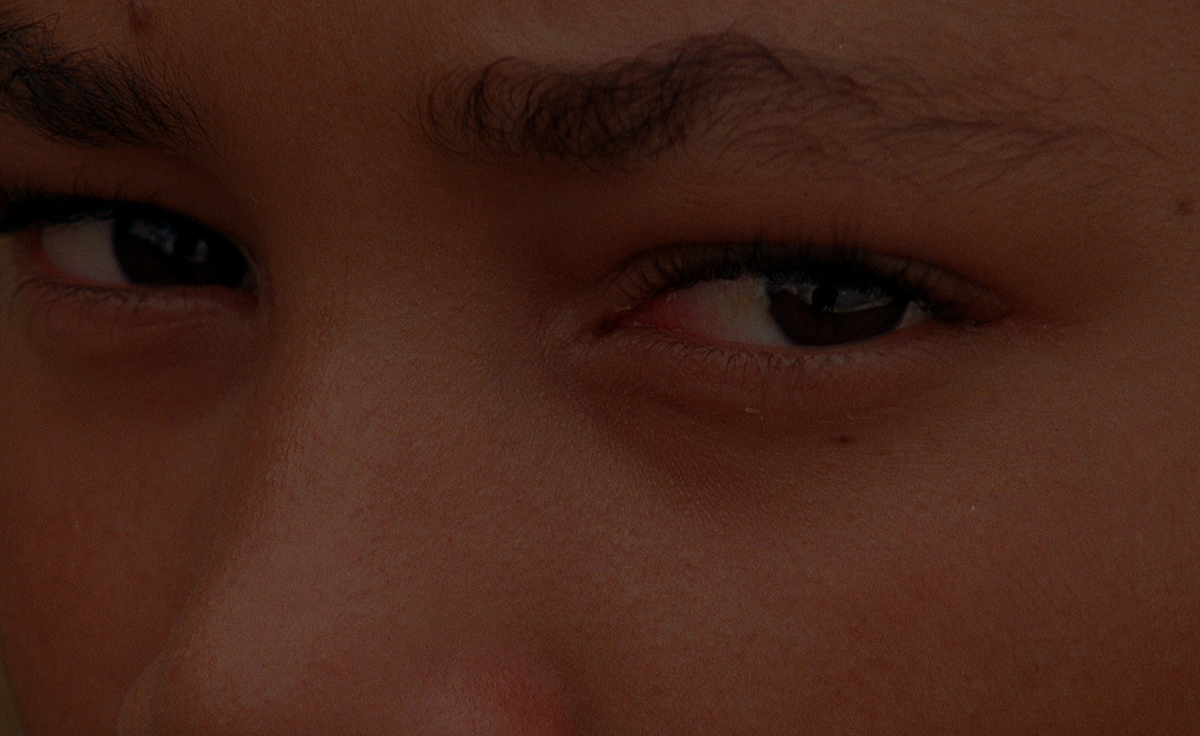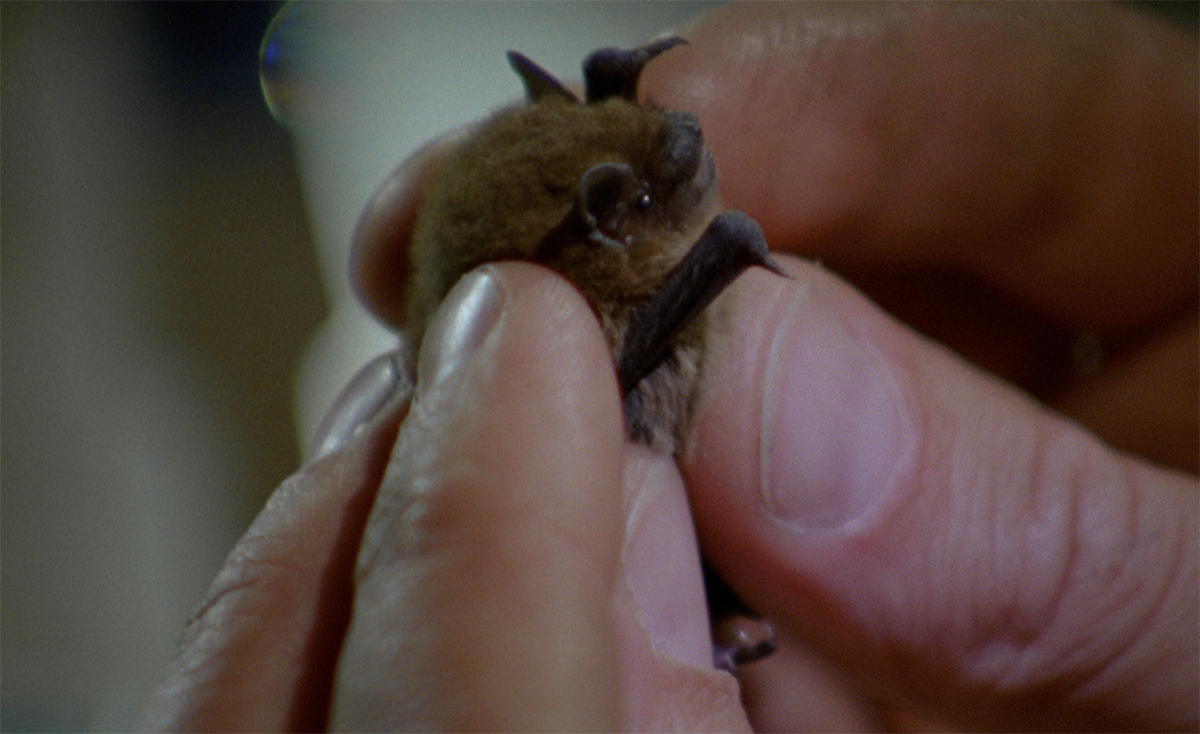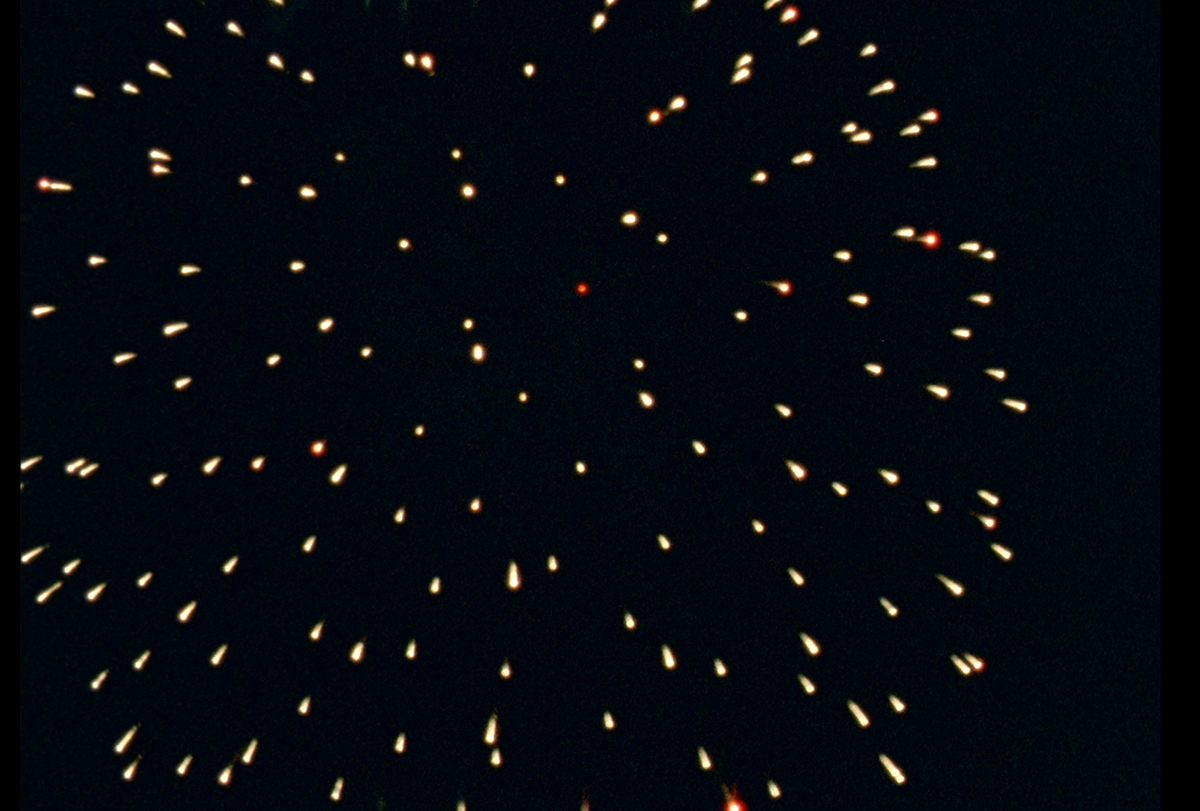Há Terra ! (There is Land!)

“Há terra ! is an encounter, a hunt, a diachronic tale of looking and becoming. As in a game, as in a chase, the film errs between character and land, land and character, predator and prey.” (Ana Vaz)
Made three years after A Idade da Pedra and featuring the same young protagonist, Ivonete dos Santos Moraes, who Vaz had met on location, Há Terra ! is a much more collaborative project that destabilises and questions the hierarchical gaze of ethnographic cinema. The traditional power dynamics between filmmaker, camera and filmed subject — and between sound and image — are subverted by giving Ivonete control over the microphone for most of the film. A cat and mouse game follows, between Ivonete and the camera, and between Ivonete’s sonic presence and her environment.
Portuguese spoken, English subtitles
Olhe Bem As Montanhas (Look Closely at the Mountains)

In Olhe Bem As Montanhas, Ana Vaz draws parallels between the state of Minas Gerais in the south west of Brazil and Nord-Pas-de-Calais in northern France, two regions marked by centuries of mining activities. Borrowing its title from the phrase “Look closely at the mountains!” coined by Brazilian artist Manfredo de Souzanetto, whose geometric landscapes often evoked the surfaces of the region, the film adopts the perspective of hollow and gutted mountains to question their industrial memory and spectral futures.
Portuguese spoken, English subtitles
Atomic Garden

Fields of newborn flowers, small gatherings of surviving bees, resistant plant species and new types of eggs lay upon our shore, engaging us to dig and search for the meaning of such unexpected life...
Atomic Garden was shot just outside the Fukushima exclusion zone in the context of Vaz’s ongoing project The Voyage Out, a speculative fiction that investigates the aftermath of the Fukushima nuclear accident and the birth of a new island in the far south of Japan.
Amérika: Bahía de las Flechas (Amérika: Bay of Arrows)

Ana Vaz proposes film as a physical experience: in Amérika: Bahía de las Flechas, the constant camera movements and shifting perspectives immerse the viewer into the landscape of Lago Enriquillo, a dying lake in the Dominican Republic.
“It is said that in the year of 1492, the first European ship led by Christopher Columbus, disembarked on the coast of Samaná, present-day Dominican Republic, and was received by a rain of arrows carefully plotted by the Caribbean Taíno. Presently, a saline lake named after the Taíno chief Enriquillo witnesses profound eco-systemic changes leading to species migration, forced evacuation and an expanding coral desert revealing the lake’s geologic past. Taking the camera itself as an arrow, a foreign body, Amérika: Bay of Arrows looks for ways in which to animate, to awaken, to make vibrate again this gesture in the present — arrows against a perpetual ‘falling sky’.” (Ana Vaz)
Occidente

“A film-poem of an ecology of signs that speaks of colonial history repeating itself. Subalterns become masters, antiques become reproducible dinner sets, exotic birds become luxury currency, exploration becomes extreme-sport-tourism, monuments become geodata. A spherical voyage eastwards and westwards marking cycles of expansion in a struggle to find one’s place, one’s sitting around a table.” (Ana Vaz)
Filming in Lisbon, Vaz proposes a sort of reverse ethnography: “I wanted to imagine the opposing trip: from the Americas into the coast of Europe, from Brazil into the port of our historic colonial administrative centre, Lisbon — an eating-up of our European roots, a ritual of devoration.” ‘Who eats who’ and ‘who feeds who’ are two of the underlying questions here.
Portuguese spoken, English subtitles
O Guardião dos Caminhos

“Paths open for the messenger to pass.” (Milena Manfredini)
In Afro-Brazilian religions, Exú is the orixá that serves as the messenger between humankind and the orixás. Shot on Super 8, Manfredini’s film explores the relationship between urban space and the sacred in the city of Rio de Janeiro.
Portuguese spoken, English subtitles